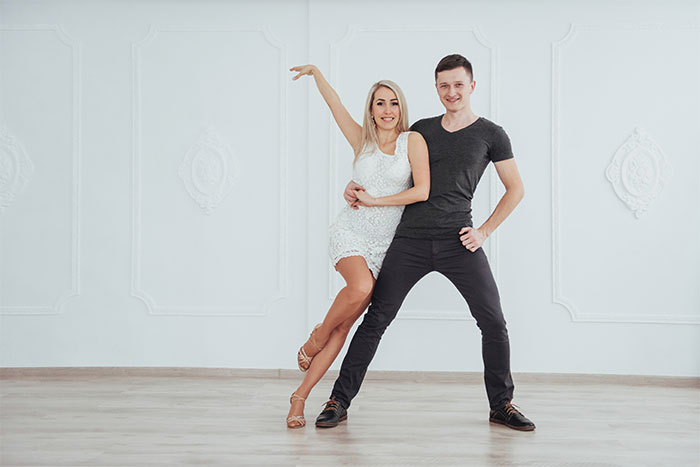The Bachata
Bachata is a style of dance that originated in the Dominican Republic. It is danced widely all over the world but not identical.
The basics to the dance are three-step with a Cuban hip motion , ended by a tap on the 4th beat just like in other Latin dances (salsa etc.). The knees should be slightly bent so the performer can sway the hips easier. The movement of the hips is very important because it’s a part of the soul of the dance. Generally controlled full body movement is crucially important in the dance, but most of it comes from the hips. In partnering, the lead can decide whether to perform in open or closed position , depending on the lead’s comfort position. Dance moves, or step variety, during performance strongly depends on the music (such as the rhythms played by the different instruments), setting, mood, and interpretation. Unlike Salsa (the most traditional Latin Dance), Bachata does not require many complex turns; although they are very well used when the musicality is understood and interpreted correctly. The leading is done just like in most other dances, with a “pushing and pulling” hand communication. If this is done correctly, the follower should clearly understand the intended direction. Although there is a lot of body movement in Bachata dancing, the hand communication is better understood when most of the movement is performed by the lower body (from waist down); I.e. hips and footwork.
Bachata is a style of dance that originated in the Dominican Republic. It is danced widely all over the world but not identical.The basics to the dance are three-step with a Cuban hip motion , ended by a tap on the 4th beat just like in other Latin dances (salsa etc.). The knees should be slightly bent so the performer can sway the hips easier. The movement of the hips is very important because it’s a part of the soul of the dance. Generally controlled full body movement is crucially important in the dance, but most of it comes from the hips. In partnering, the lead can decide whether to perform in open or closed position , depending on the lead’s comfort position. Dance moves, or step variety, during performance strongly depends on the music (such as the rhythms played by the different instruments), setting, mood, and interpretation. Unlike Salsa (the most traditional Latin Dance), Bachata does not require many complex turns; although they are very well used when the musicality is understood and interpreted correctly. The leading is done just like in most other dances, with a “pushing and pulling” hand communication. If this is done correctly, the follower should clearly understand the intended direction. Although there is a lot of body movement in Bachata dancing, the hand communication is better understood when most of the movement is performed by the lower body (from waist down); I.e. hips and footwork.
